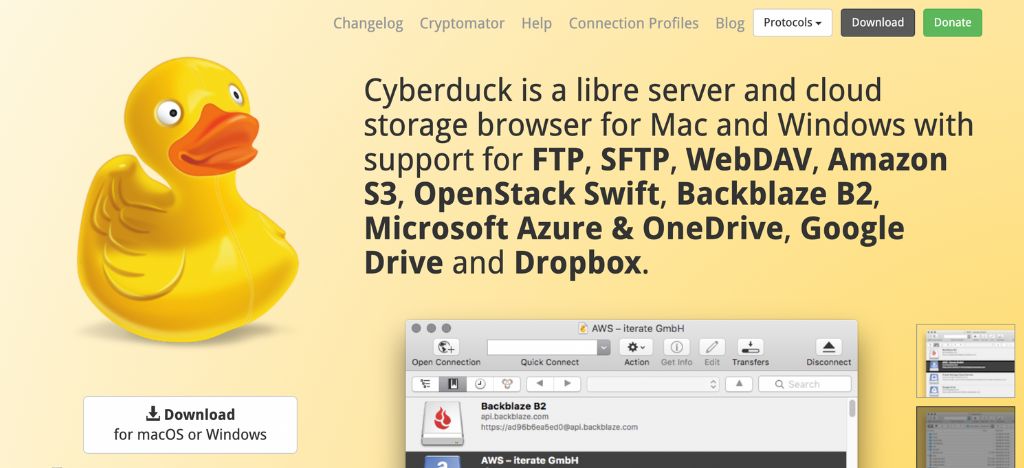
Whether you’re working for a business online or creating one of your own, there are a lot of things that you need to know about transfers.
FTP (File Transfer Protocol) is an essential tool for anyone who needs to transfer files between servers, computers, or other devices.
Whether you’re a website owner like me, a developer, or an IT professional, knowing how to use FTP is crucial for managing files efficiently and securely.
With the rise of cloud-based file-sharing solutions, some may argue that FTP is becoming less relevant, but it remains a critical tool for many users due to its speed, reliability, and security.
I have quite a bit of experience with hosting and file management, so I’m here today to shed light on this less-talked-about kind of hosting so you can decide if it’s right for you.
Table Of Contents
- Quick Summary
- What Is FTP?
- What Is An FTP Hosting Account?
- How Does FTP Work
- What Information Do I Use For My FTP?
- The Difference Between FTP, FTPS, and SFTP
- How Do You Use FTP
- How Do You Configure FTP Clients for an FTP Server?
- Is FTP Safe?
- Does FTP Use TCP or UDP?
- Familiarize Yourself With FTP Before Selecting a Web Hosting Provider
Quick Summary
FTP (File Transfer Protocol) is a vital tool for transferring files between servers, computers, or devices, offering speed and security.
FTP operates via two channels: the command channel for initiating responses, and the data channel for data transfer.
Despite FTP’s lack of built-in security, FTPS and SFTP offer additional security layers, crucial for selecting a web hosting provider.
What Is FTP?
File transfer protocol ftp is a protocol that’s used to transfer files online. With it, you can exchange data and commands between a computer and a server (a.k.a., FTP host).

The host acts as a remote directory for your website’s data transfer and applications. It allows you to easily put these things on hypertext transfer protocol where file transfers is possible.
To make these commands you’ll need to use FTP client software programs. There are several different many ftp clients to use when making the data connection (e.g., Cyberduck, FileZilla open source software).
What Is An FTP Hosting Account?
An FTP host is a URL that you connect to. Once connected you can use the internet to manage and downloading files that are located elsewhere.
To do this you’ll need a file transfer protocol program (e.g., FileZilla, WinSCP) and the FTP host’s username and password. (Sometimes anonymous FTP access is possible when you’re using a public host or one that’s been misconfigured).

The reason these hosts work is that there’s a remote computer with “server” software running on it. This shares part of its storage system with those online.
File transfer protocol ftp server or a method of accessing the files is necessary to view and copy the files back and forth.
There are several reasons why you may want to use this hosting option, including:
You can use your FTP server to transfer files from one computer to your FTP accounts
Create an intranet so to facilitate file transfers or offer secure file transfer protocol access
Free up disk space on a physical server by hosting data on a shared server
Either create a website or move content to new domain names
Back up important information
Have a central location for storing information that several websites use
How Does FTP Work
To establish FTP connection with your one FTP account you need two communication channels (the command channel that initiates the response and the data channel which is responsible for data transfer).

To establish an FTP connection FTP clients must have permission to communicate on the network. This requires that you provide them with credentials to the file transfer protocol server.
Some public FTP servers don’t require credentials. It’s also common with an anonymous FTP.
To transfer files or receive something, you’ll create changes in the server. When you do so, the server will grant you this access. This is what’s known as “active connection mode.”

These servers facilitate FTP transfers across the internet. When you send files via FTP they’re transferred from you to the server. This is what’s known as “uploading files.”
On the other hand, FTP also makes it easy to download files. When you want to “download files,” the uploaded files are transferred from the server to you.
Sometimes if there’s a firewall in place to protect the user’s machine, there may be a problem transferring files in active mode.
This is because firewalls typically don’t allow external parties to host unauthorized sessions.
What Information Do I Use For My FTP?
You’ll need to use the name of your web hosting service account, your username and password, and the domain names of the live web directories so you can use them for your file transfer protocol ftp.

Typically, your FTP username and password are the same ones you use for your cPanel. The hostname is typically your domain name with FTP at the beginning.
The Difference Between FTP, FTPS, and SFTP
There are a few different ways that you can transfer files via FTP. You should familiarize yourself with these in case you want to restrict the FTP at either the user level or the listener level
FTP
This is the standard method that’s used for transmitting data between an FTP client and server. With it, you can create a username and password so you can regulate user access.

Although the link between the windows ftp client and server is secure, the data transmission isn’t since the information that’s sent via FTP standards isn’t encrypted.
This places it at risk of being intercepted by malicious third parties. For this reason, another secure FTP protocol was developed to help FTP clients.
FTPS
This is the ftp secure sockets layer version of file transfer protocol. With it, you have an additional level to your FTP server and website. Therefore data channel is protected while you initiate transfers between the FTP clients and the FTP.
SFTP
SSH File Transfer Protocol (a.k.a., Secure File Transfer Protocol, SFTP) is similar to FTPS in that it uses encryption to secure data as it flows between you and the FTP work server.

This encryption is what’s known as a “secure tunnel.” You can make this even stronger by creating an authentication system that requires an SSH key.
When SFTP transmits data through the tunnel and synchronizes it in folders the information can’t be read. This prevents fraudulent access to any files found on the FTP server.
This isIt’s why SFTP is the most secure protocol for you to use to upload data to your server.
How Do You Use FTP
FTP servers are the midpoint between a file’s sender and its recipient. These servers need an FTP host address (e.g., ftp.examplecompany.net, 12.345.678.90).

You may also need a username and password depending on the type of file transfer server and its security.
Once you have this information you can establish an FTP secure connection either by using a command-line FTP (typically used for file transfer) or using web browsers to communicate with it (a user may find this more convenient, especially when accessing large directories).
Many people will tell you that there are several reasons why they prefer to use a file transfer protocol client. Not only is an FTP client easier to manage, but it’s also more powerful, and it offers you more freedom to transfer files.
There are also more features available for transfer (e.g., the ability for large file transfer, synchronizing utility) with it. In addition, FTP service can allow you to transfer multiple files simultaneously.
How Do You Configure FTP Clients for an FTP Server?
To connect to the FTP server you’ll need to use your FTP client. Popular software clients are Filezilla and Cyberduck.

Once installed, the software displays an FTP login for your FTP accounts you can enter your information (e.g., username, login credentials) so you can access the web service web hosting plan provider.
Regardless of which FTP client software you use to connect to your FTP account.
To create a website you’ll need to either copy or drag and drop the documents you want to import. You can then make them live online so anyone can find then when they search using the different web browsers.
Is FTP Safe?
FTP is not the safest. It lacks built-in security safeguards, making it easier for file transfer because it sends data in clear text without encryption. Making FTP secure can be hard, which is why FTP transfers are vulnerable to a number of malicious attacks.
Does FTP Use TCP or UDP?
Yes, FTP always uses transmission control protocol (TCP) for transport requirements; it never uses user datagram protocol (UDP).
Familiarize Yourself With FTP Before Selecting a Web Hosting Provider
Before you select a web hosting provider there are a lot of things you need to know.
How to upload files to your hosting account via file transfer protocol and where to find the best remote host are just a few examples of these things.
Once you have a better understanding of this hosting you’re ready to use it for yourself for transfer.
The first step you’ll need to take is spending some time reading through this guide about everything you need to know about web hosting you’ll be ready to select your hosting service. So, take some time to check it out today.

